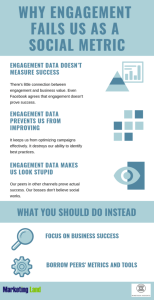Many assumed that a more precarious economic outlook would bring resignation levels back to pre-pandemic norms. Instead, inflation and recessions fears seem to be inspiring more workers to switch jobs.
When the economy takes a turn for the worst, quit rates tend to drop dramatically, as they did during the 2008 recession and at the start of the pandemic. A recent study conducted by Bankrate, however, found those who are most concerned about job security in this economy are also more likely to demand a raise, greater flexibility, search for a new job, or quit.
According to the survey of more than 2,400 U.S. adults, one-third are concerned about job security. Among this group, nearly half plan to quit in the next 12 months, compared with just 20% of those who aren’t worried about job security. Furthermore, 72% plan to look for a new job compared with 34% of those who feel more secure. Overall, 88% of those who are concerned about job security plan to take some kind of action in the next year, such as demanding more flexibility or a higher income, searching for a new job, or quitting.
“Job hopping, or even asking for higher pay, are features of economies that inspire confidence, and it’s safe to infer here that workers are continuing to do this while also simultaneously being less confident about the economy,” says Bankrate analyst Sarah Foster.
Inflation is Causing Workers to Ask for More Money
Most experts anticipated the historically high level of resignations seen since mid-2021 would return to pre-pandemic norms once the economy slowed, but the study suggests a weakened economy may be inspiring workers to demand more from their employers.
“The hot labor market is contributing to inflation, but inflation itself is inspiring workers to ask for higher pay because wages are not keeping up,” Foster says. “It’s a unique economic environment where workers have this historic amount of bargaining power at the same time that they’re dealing with the highest inflation in decades, so they have more reason to advocate for what they want.”
Furthermore, workers have traditionally been more hesitant to change jobs when they fear a recession or widespread layoffs around the corner because of the “last-in, first-out” principle, wherein companies target their most recent hires for termination.
“I think a lot of labor economists and experts kind of question that narrative now; there are instances where tenure comes into play, but during the pandemic people were let go regardless of tenure,” Foster says. “There’s so many factors that go into who gets cut—for example, we’re seeing marketing budgets get cut first—and since job loss was so widespread during the pandemic, the lesson was that nobody is immune, which puts that [last-in, first-out] theory into question.”
What It Would Take to Break the Pattern?
According to the latest figures from the Bureau of Labor Statistics, there have been about 3.8 million resignations in each of the first four months of 2023. While that number has come down from the Great Resignation’s peak in November 2021—when 4.5 million Americans walked off their jobs in a single month—they remain well above pre-pandemic norms, when monthly resignations rarely surpassed 3.5 million. Furthermore, though the unemployment rate did tick up slightly in May, from 3.4% to 3.7%, it remains near historic lows.
“The kind of churn that we’ve seen in this labor market, even though it’s down from a year ago, is higher than it [has been] historically; that is unusual,” says Elise Gould, a senior economist at the Economic Policy Institute. “The labor market has been incredibly resilient to the rising interest rates, the layoffs that we saw; the data is not showing that it is weakening, at least not yet.”
Gould explains that most of the churn is happening at the lower ends of the wage spectrum, particularly among industries that were hardest hit by the pandemic, like retail, hospitality, and food services, where labor shortages remain most persistent. She adds that rebalancing the labor market’s power dynamic would require significant changes to either supply or demand.
“If the federal reserve keeps raising rates, then we likely will go into a recession, and then workers won’t be as scarce, and that will change the dynamic tremendously,” she says. “In terms of supply, I would point to why aren’t more women participating in the labor market? You could have a huge windfall of more women participating if we had better childcare policies, better parental leave, more of those kinds of things.”
Barring a major change to either side of the equation, Gould says the current market dynamic is likely to persist.
The Great Resignation Continues
The Bankrate data showing layoff fears and resignations rising in tandem was echoed in a similar survey recently conducted by FlexJobs. According to that study, 20% of professionals have recently quit their jobs and another 42% are considering leaving as well. At the same time, 39% are worried about getting laid off, and 11% have been laid off in the past six months.
“It may have cooled down a little bit, but with this many people still actively thinking about making this type of a change, it would be inaccurate to say the Great Resignation is over,” says FlexJobs career expert Keith Spencer. “People are maybe a little bit more concerned about quitting without having something else lined up, but the fact that this is still on people’s mind shows that there is that potential for the Great Resignation to keep going for quite some time.”
The factors that motivated workers to leave their jobs have remained relatively consistent since the start of the Great Resignation, according to the latest data, with elements like work-life balance, compensation, culture, advancement opportunities, and mental health topping the list. Spencer explains that the consistency in motivating factors could suggest that most employers are not giving into these new employee demands.
“People are not afraid anymore to talk openly about how much they’re making; there are a lot of salary calculators out there and resources people can use to find their market value, so people know if they’re underpaid,” Spencer says.
He explains that in order to avoid widespread resignations, employers need to ensure that compensation levels and flexibility policies are meeting industry standards, and that they’re gathering and acting on employee feedback. Spencer adds that employers should also focus on their employee recognition, promotion, and advancement policies, and beef up their diversity, equity, and inclusion practices, as well as their broader company culture, in order to stay current with employee demands.
“If you’re experiencing high rates of turnover, that’s going to negatively impact your revenue, you’re going to see losses in productivity, and then it’s going to compound the stress on the people that do stick around,” he says. “It’s important to look at that now, rather than waiting until it becomes a more significant problem.”
(3)








